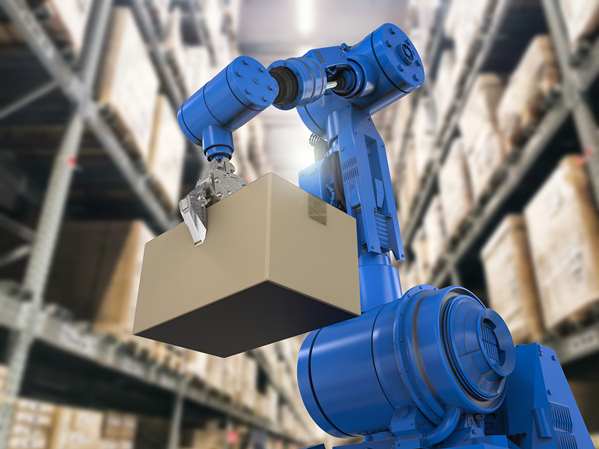
Robots have become one aspect of manufacturing that evolves with the industry. Changes in the makeup and the work that robots do define the manufacturing industry. In the technology age, robots have transformed and are leading in the manufacturing changes defining these eras.
Mass customization, human-to-robot collaboration, robot-to-robot collaboration, are among many other changes that have come about as robots have transformed manufacturing and themselves in the technology age.
One of the major tasks now left to robots is material handling. It involves automating many of the tasks on the production line. Tasks that involve the movement of products throughout the production process form one point to another.
Here are some machine handling tasks in the factory that can be competently handled by robots.
Palletizing
Palletizing is the process of loading and unloading boxes of finished products or parts onto or from a pallet. A palletizing robot or robots are important to in as many companies that receive and ship products on a pallet.
Palletizing robots are strong enough to lift and store pallets as required. They are also fast and strong. All robots carrying out machine handling tasks work faster than any team of human workers assigned the tasks.
Packaging
This is another material handling task that can be assigned to robots. For robots to carry out packaging tasks easily, they need the appropriate end-of-arm-tooling equipment. Further, these robots have vision technology that allows them to see the products they are packing.
Machine Tending
Many factories are now using robots to carry out machine tending tasks. Machine tending is a monotonous repetitive task. It causes boredom which may lead to injuries. Robots that carry out machine tending tasks can load and manage more than one machine at a go.
Machine tending robots are fast enough to manage several machines. They have a long reach while occupying only a small space on the factory floor. They are also able to carry a heavy payload to maximize efficiency and effectiveness.
Advantages Of Using Material Handling Robots
Speeds Up Production
Robots are mechanical contraptions. They work at a faster rate than any human worker or team in the factory. They do not need breaks and can work continuously without breaking down or stopping. This increases the rate at which production takes place.
Saves On Labor Costs
When you use robots for machine handling tasks, you will save time and money. You will have fewer people assigned to these tasks as robots can handle the bulk of the work. This, therefore, reduces the cost of production allowing factories to offer their products at attractive prices.
Robots also lower the risk of injuries in the workplace. This is a significant labor cost in factories that are yet to automate their machine handling process.
Eliminates Health Hazards For Workers
In addition to lowering the risk of occurrence of injuries automating machine handling tasks leads to lower exposure to hazardous work situations. Robots can handle hazardous materials without any risk to their structure or frame. This saves the human workers the risk of being exposed to situations that may affect their health in the course of work.
Leads To Enhanced Production
When a factory automates its machine handling processes with robots, they can easily improve their production. Where they previously worked for 8-9 hours a day, factories can introduce a new work shift for robot production. Robots do not tire and can work continuously thus increasing the output of the factory.
Conclusion
Automating machine handling tasks has led to more benefits for the factories and their people. Robots make it easier and faster to complete these tasks that have always been handled manually in the manufacturing field. Palletizing robots are a significant example of automating a taxing manual task that requires a large number of people to carry out properly. The competence of robots at handling these tasks leads to higher production rates and favorable workplaces.




